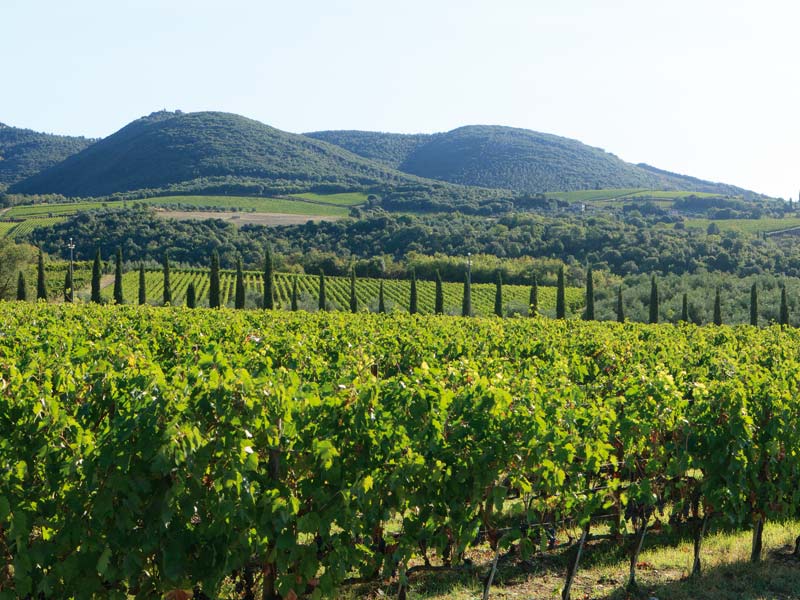 We are off next month on a private bike and wine tour in Tuscany, where we will enjoy panoramic views of the lovely landscape of this region while we explore Tuscany’s best wine areas. Tuscany, and its largest wine zone Chianti, is probably the most famous wine growing area in Italy, even though it is only #6 in terms of wine production.
We are off next month on a private bike and wine tour in Tuscany, where we will enjoy panoramic views of the lovely landscape of this region while we explore Tuscany’s best wine areas. Tuscany, and its largest wine zone Chianti, is probably the most famous wine growing area in Italy, even though it is only #6 in terms of wine production.
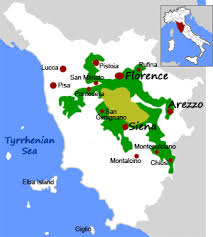 The Chianti regions – there are officially two, Chianti DOCG and Chianti Classico DOCG – lie in the Tuscan hills, in west-central Italy. The first mention of a Chianti wine region dates back to 1716, when Cosimo de Medici defined this wine zone. This original zone, today the Chianti Classico DOCG, shown in lighter green on the map, is a hilly area between the cities of Siena and Florence. You will see many of the villages in this original zone have appended their names with the ‘in Chianti’ designation, such as Greve in Chianti, Radda in Chianti, and Gaiole in Chianti.
The Chianti regions – there are officially two, Chianti DOCG and Chianti Classico DOCG – lie in the Tuscan hills, in west-central Italy. The first mention of a Chianti wine region dates back to 1716, when Cosimo de Medici defined this wine zone. This original zone, today the Chianti Classico DOCG, shown in lighter green on the map, is a hilly area between the cities of Siena and Florence. You will see many of the villages in this original zone have appended their names with the ‘in Chianti’ designation, such as Greve in Chianti, Radda in Chianti, and Gaiole in Chianti.
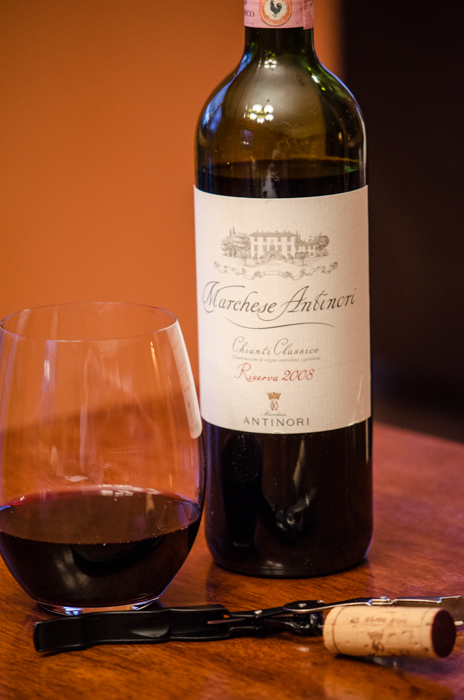 The Chianti DOCG, shown in darker green, surrounds the original Classico zone with fingers stretching in all directions. This region is divided into seven subzones, Colli Aretini, Colli Fiorentini, Colline Pisane, Colli Senesi, Montalbano, Montespertoli and Rufina. You will often, but not always, see the subzone identified on the label.
The Chianti DOCG, shown in darker green, surrounds the original Classico zone with fingers stretching in all directions. This region is divided into seven subzones, Colli Aretini, Colli Fiorentini, Colline Pisane, Colli Senesi, Montalbano, Montespertoli and Rufina. You will often, but not always, see the subzone identified on the label.
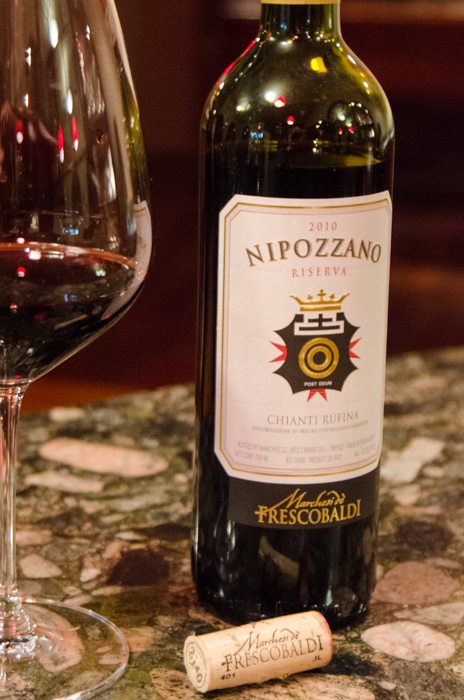 In the 1850s, a local landowner, Baron Ricasoli, declared his ‘recipe’ for Chianti, based on the native Sangiovese grape blended with 15% Canaiolo and 15% Malvasia Bianco. The Italian government voted this into law in 1966. As with many Italian wines, as international demand increased in the 1960s, Chianti producers increased production by utilizing lower quality grapes, ultimately flooding the market with inferior wines. These Chianti were packaged in the now well recognized squat bottle with a straw covering, appropriately called a fiasco.
In the 1850s, a local landowner, Baron Ricasoli, declared his ‘recipe’ for Chianti, based on the native Sangiovese grape blended with 15% Canaiolo and 15% Malvasia Bianco. The Italian government voted this into law in 1966. As with many Italian wines, as international demand increased in the 1960s, Chianti producers increased production by utilizing lower quality grapes, ultimately flooding the market with inferior wines. These Chianti were packaged in the now well recognized squat bottle with a straw covering, appropriately called a fiasco.
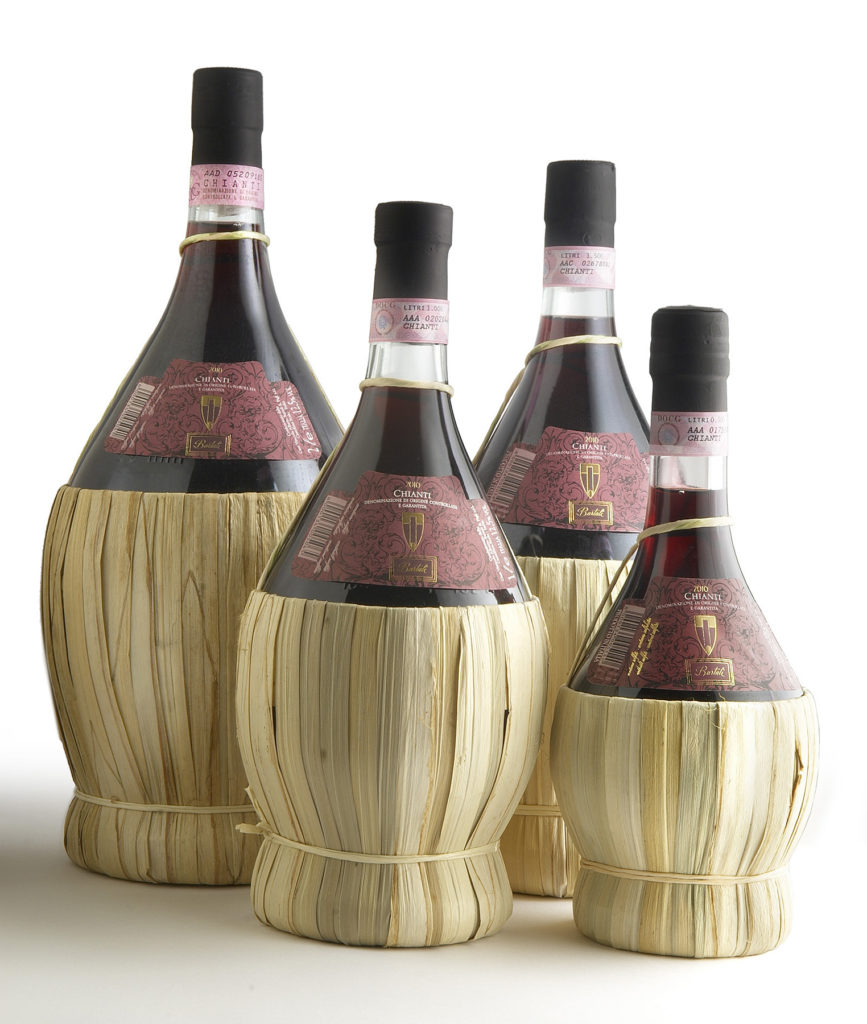 In the 1970s, new investors entered the area, with a renewed focus on quality production. In addition to investing in modern production facilities and new cultivation techniques, many of these new producers began experimenting with the traditional Chianti recipe, replacing the lower quality white grapes with international varietals such as Cabernet Sauvignon and Merlot. This new style of wine became quite controversial, as many viewed these as not ‘true’ Chianti wines. Today, the official definition of Chianti consists of at minimum 70% Sangiovese, with a maximum of 10% white grapes allowed. Permitted blending grapes are traditional native varietals such as Canaiolo and Colorino, as well as international varieties such as Cabernet Sauvignon and Cabernet Franc. Chianti Classico wines must be a minimum of 80% Sangiovese, with white grapes no longer allowed at all.
In the 1970s, new investors entered the area, with a renewed focus on quality production. In addition to investing in modern production facilities and new cultivation techniques, many of these new producers began experimenting with the traditional Chianti recipe, replacing the lower quality white grapes with international varietals such as Cabernet Sauvignon and Merlot. This new style of wine became quite controversial, as many viewed these as not ‘true’ Chianti wines. Today, the official definition of Chianti consists of at minimum 70% Sangiovese, with a maximum of 10% white grapes allowed. Permitted blending grapes are traditional native varietals such as Canaiolo and Colorino, as well as international varieties such as Cabernet Sauvignon and Cabernet Franc. Chianti Classico wines must be a minimum of 80% Sangiovese, with white grapes no longer allowed at all.
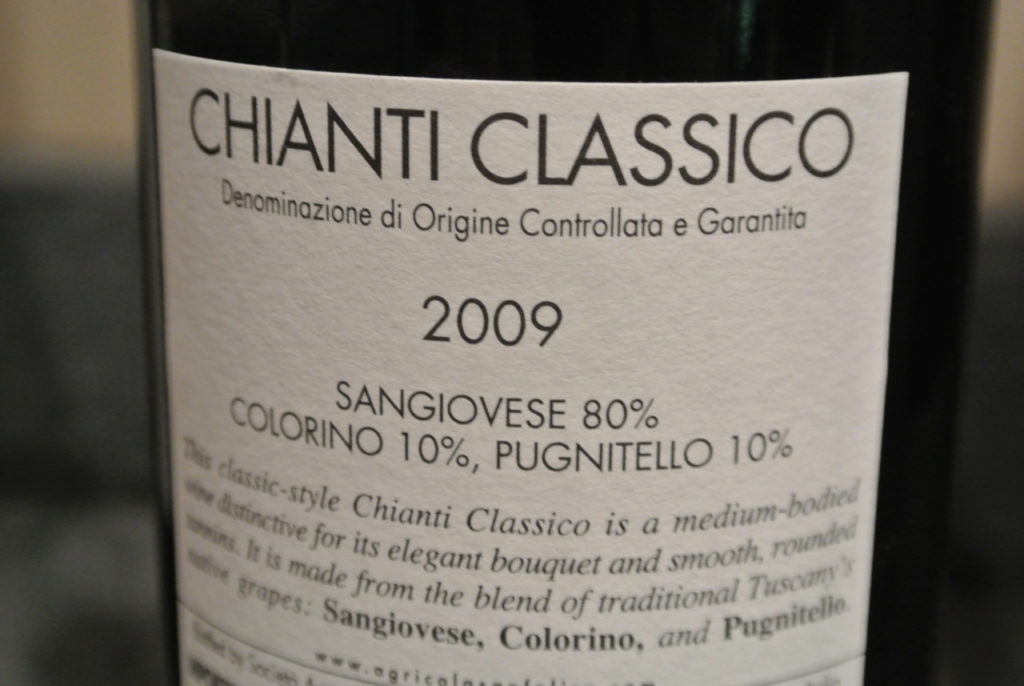 Aging requirements vary from subzone to subzone; the Riserva designation indicates a Chianti that has been aged for a minimum of 2 years (instead of 4-7 months). Chianti that meets even more stringent requirements on yield, alcohol content and dry extract, may be labelled as Chianti Superiore, although Chianti from the “Classico” sub-area is not allowed to be labelled as Superiore.
Aging requirements vary from subzone to subzone; the Riserva designation indicates a Chianti that has been aged for a minimum of 2 years (instead of 4-7 months). Chianti that meets even more stringent requirements on yield, alcohol content and dry extract, may be labelled as Chianti Superiore, although Chianti from the “Classico” sub-area is not allowed to be labelled as Superiore.
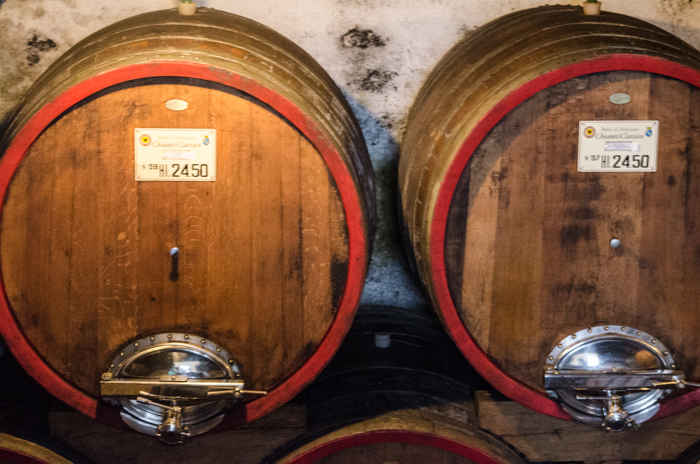 A Chianti bottle will often have a picture of a black rooster (gallo nero) on the neck of the bottle, indicating that the producer is a member of the Gallo Nero Consortium. This is an association of producers of the Classico sub-area that work together to jointly promote the Chianti brand. The ‘gallo nero’, a traditional figure denoting peace between long time rivals Florence and Siena, has been the emblem of the Chianti Classico producers association since 2005. Legend has it that in 13th century Florence and Siena decided to use a horse race to end their land dispute over Chianti. The meeting point of two knights, who had left respectively from Florence and Siena when the rooster sang at dawn, would mark the new border. The Florentines selected a black rooster and kept it for a few days in a box with no food. On the day of the race, when they took the rooster out of the box, he sang much earlier than dawn. Thus the Florentine knight left before the Sienese rider, meeting him only him only 20 km from Siena walls. Since then the black rooster has been the symbol of Chianti: first of the Chianti League in 13th century and then of the Chianti Classico Consortium.
A Chianti bottle will often have a picture of a black rooster (gallo nero) on the neck of the bottle, indicating that the producer is a member of the Gallo Nero Consortium. This is an association of producers of the Classico sub-area that work together to jointly promote the Chianti brand. The ‘gallo nero’, a traditional figure denoting peace between long time rivals Florence and Siena, has been the emblem of the Chianti Classico producers association since 2005. Legend has it that in 13th century Florence and Siena decided to use a horse race to end their land dispute over Chianti. The meeting point of two knights, who had left respectively from Florence and Siena when the rooster sang at dawn, would mark the new border. The Florentines selected a black rooster and kept it for a few days in a box with no food. On the day of the race, when they took the rooster out of the box, he sang much earlier than dawn. Thus the Florentine knight left before the Sienese rider, meeting him only him only 20 km from Siena walls. Since then the black rooster has been the symbol of Chianti: first of the Chianti League in 13th century and then of the Chianti Classico Consortium.
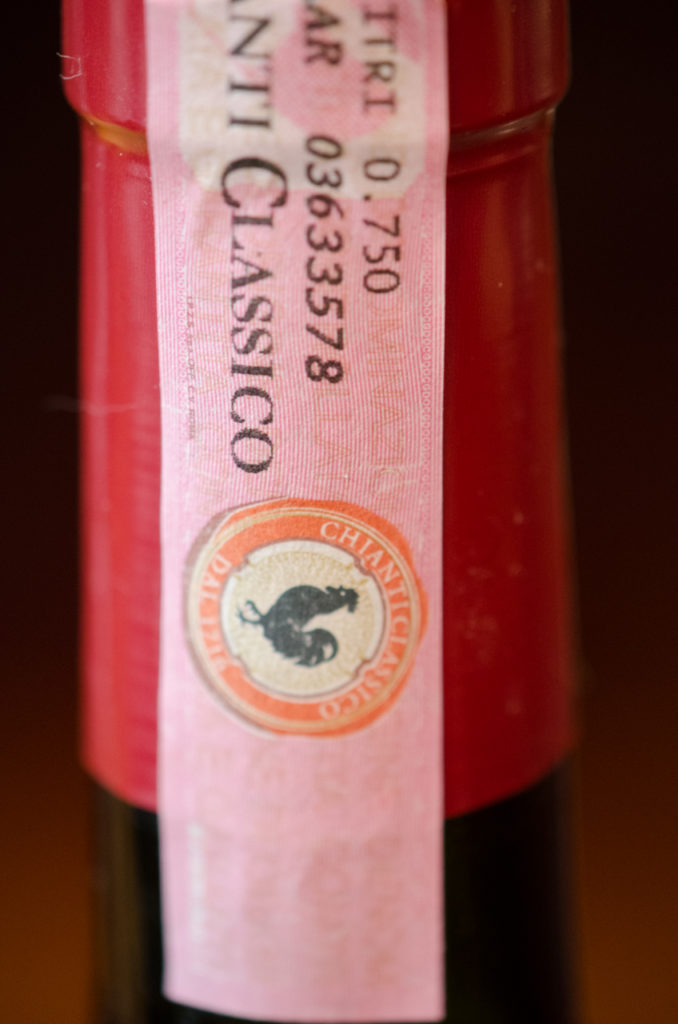
Chianti wines are characterized by their acidity, dryness, and distinctive flavors of cherry and herbs. They are ruby red, moderate in alcohol, and somewhat tannic. Younger, lighter Chianti pairs well with pastas, pizza and panini. A more robust Riserva would be a great match to roasted or grilled meats, such as a thick grilled Bistecca alla Fiorentina, Tuscany’s famed breed of white Chianina cattle.
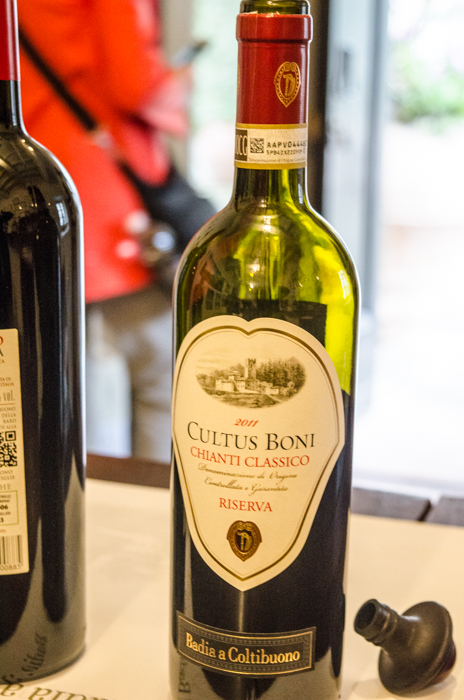
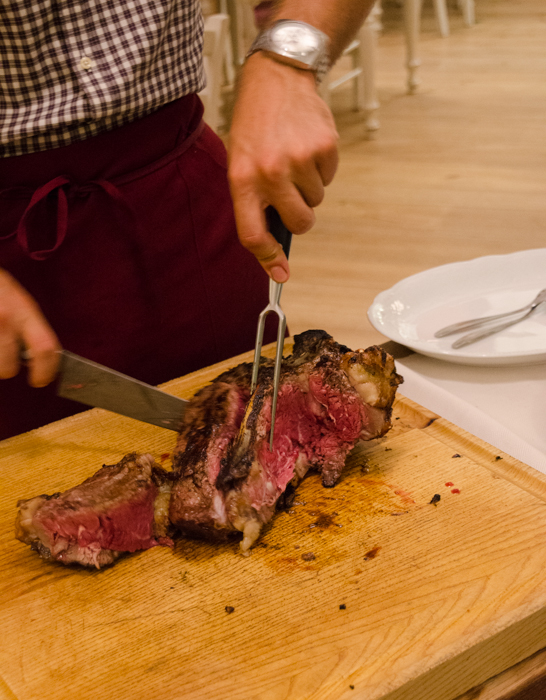

One Response to What is Chianti? Exploring Italian Wines with Italiaoutdoors